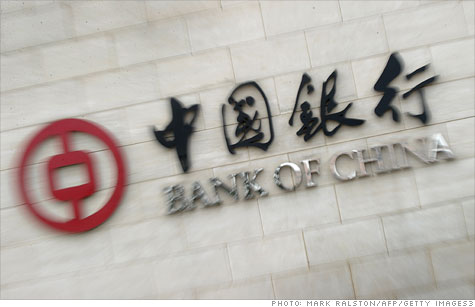
NEW YORK (CNNMoney) -- China essentially got an "E" for effort Tuesday from the International Monetary Fund, which applauded strides made in bolstering the financial sector but issued a long list of improvements that still have to be made.
In its review of China's financial system, the IMF said the nation's banks were making "remarkable progress" in transitioning to a more free and stable financial system.
That said, its banks still rely far too heavily on the government and need to enact a series of reforms to avoid building asset bubbles, particularly in real estate, the IMF said in its 126-page report.
"Despite ongoing reform and financial strength, China confronts a steady buildup of financial sector vulnerabilities," it said.
The report notes that a large share of China's banks are state-owned, and much of their senior management is appointed by the government. The IMF urged banks to reduce their state involvement to focus instead upon "purely commercial goals."
"The heavy involvement by the state in many aspects of the financial system reduces market discipline, weakens corporate governance, and is likely to create soft budget constraints," it says.
Interest rates, not limits on bank lending, should be the government's primary tool for influencing the flow of money in China, the IMF said. Meanwhile, it said the central bank, the People's Bank of China, should increase regulation and supervision of the banking sector.
The IMF's analysis follows stress tests of 17 Chinese banks, which turned up mixed results. On one hand, the tests showed most banks could probably withstand one-time shocks such as falling asset prices, declining real estate values or changes in the yuan's exchange rate. On the other hand, those same banks could be severely impacted if several of those shocks occurred at once.
The IMF report also includes an important caveat, admitting the analysis was hindered by a lack of key historical financial data from the banks that were included in the study.
Responding to the report, the People's Bank of China said the IMF's critique was, for the most part, positive and constructive. But it said some of the IMF's key points were not "sufficiently well-rounded or objective."
"We believe that, after years of reform, China's financial system has made considerable progress towards commercialization," the PBOC said on its website, not specifying which parts or the report it took issue with.
The IMF's report was based on data compiled in the second half of 2010, and economic conditions have since changed. For example, the report cites the sharp increase in China's real estate prices as a potential risk to the banking sector, but the real estate boom has since started to fade.
The Chinese economy grew 9.1% year-over-year in the third quarter, marking a slight slowdown from earlier this year, as the Beijing government focuses on curbing rapid inflation. ![]()
| Overnight Avg Rate | Latest | Change | Last Week |
|---|---|---|---|
| 30 yr fixed | 3.80% | 3.88% | |
| 15 yr fixed | 3.20% | 3.23% | |
| 5/1 ARM | 3.84% | 3.88% | |
| 30 yr refi | 3.82% | 3.93% | |
| 15 yr refi | 3.20% | 3.23% |
Today's featured rates: